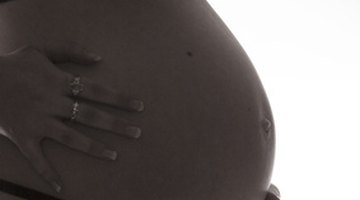How to Make Your Baby Kick
Encouraging Kicks: Everything a Pregnant Woman Should Know About Fetal Movement
Many mothers agree that feeling their baby kick is one of the best parts of pregnancy. Before you get the joy of meeting your son or daughter, those gentle jabs and rolls feel like a special form of communication that you secretly share with your child. It’s a sensation almost impossible to describe. If it’s your first pregnancy, you might be eager to feel the early kicks, but there’s no way to speed them along—you can only wait patiently. Later on, your partner and other loved ones will be anxious to feel the baby move too, and again, there’s no way to get kicks on command. However, a few tried-and-tested techniques can encourage your baby to perk up and start wriggling. They’re not guaranteed to work every time, but they might provide enough of a nudge to get those little limbs going. Furthermore, a few of these tricks can be very useful for easing your mind when “kick counts” come into play toward the end of your pregnancy.
The First Kicks

The Frequency of a Baby's Kicks in the Womb at Six Months Pregnant
Learn More
A pregnant woman usually starts to feel her baby’s kicks between weeks 14 to 26. For first-time mothers, it’s generally around week 18 at the earliest; whereas, women who have been pregnant before might first feel something between weeks 14 to 16. This is mostly because second-time mothers know what kicking feels like and are less likely to mistake it for something else, such as a muscle twinge or gas. The first kicks felt during pregnancy are known as “quickening,” and they are variously described as feeling like flutters, butterflies, waves or twitches.
In the early stages of feeling fetal movement, the kicks will seem quite irregular. It’s normal to feel kicking several times one day, but nothing for the next few days. Soon, the sensations will become increasingly regular, eventually falling into a pattern.
Typical Fetal Movements
It’s common for pregnant women to feel the most frequent and strongest movements in the late evening or nighttime, especially when resting and lying down. Doctors believe this is because your movement during the day rocks the baby to sleep, while your relative stillness at night makes it easier for the baby to stretch her limbs, roll around, shift positions and develop important motor skills. A mother’s fluctuating blood sugar levels are also a factor.
Kicking becomes stronger and more regular as pregnancy progresses. Regular sleeping/waking patterns might begin to be noticeable around month six, and by month seven, some movements can start to cause discomfort. You might also feel rhythmic spasm-like movements, which are the baby’s hiccups. By month eight, a baby’s movements can often be seen from outside the stomach. During the final month of pregnancy, the baby’s movements usually become a little less frequent because he has less room to maneuver. You’ll probably feel feet pressing into your ribs, and you might begin to sense the baby’s head pressing down on your cervix.
Encouraging Kicks

When Do You Feel Baby Kick?
Learn More
The following tips are a few ways to encourage your baby to kick or move at a time when she’s being still. After trying one or more of these techniques, sit or lie still and relax, which will make it easier to feel any movements.
- Eat a snack or drink a small glass of fruit juice. The rise in your blood sugar can give the baby an energy boost.
- Do some jumping jacks or jog on the spot for a minute or two. The jiggling movement might wake a sleepy baby or encourage her to move into a new position.
- Shine a flashlight directly onto your belly. A baby can see light and dark from around week 22, and she may respond to the visual cue.
- Try gently pressing or poking your bump in an area where you can feel the baby is resting. You might get a poke back in response.
- If your baby is still while the room is quiet, talk or play music, and he may respond with movement. Some pregnant women like to put headphones around their baby bump.
- In the later stages of pregnancy, pelvis tilts and other gentle, pregnancy-approved stretches can get the baby to shift positions. This technique is useful when you’re uncomfortable, for example, if you have a tiny foot pressing into your ribs.
Kick Counts
Kick counts—which means timing the length of time it takes to tally 10 baby kicks—are a tool used during the third trimester to monitor fetal movement. Ask your doctor for her recommended number of kicks at this stage. Some ask that you routinely count kicks twice daily throughout the third trimester; others want you to count them only if you’re concerned about a reduction in movement. Generally, you should feel 10 movements within an hour. If you don’t, eat a snack, drink fruit juice or try one of the other techniques to encourage movement; then lie down and repeat the test. If you don’t feel 10 movements within two hours, call your doctor. Lack of movement usually just means a sleepy baby, but it’s best to err on the side of caution and get your practitioner’s advice if you’re concerned.











